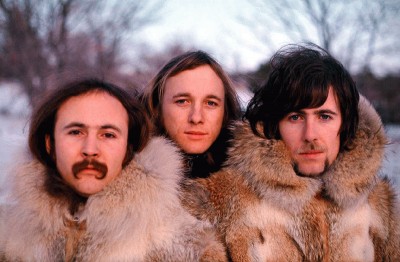 | |||
 | |||

|
Crosby, Stills & Nash - Album Cover Location - West Hollywood, California - 1969 The album cover. (courtesy of Atlantic; cover photo: (c) Henry Diltz; art direction Gary Burden) 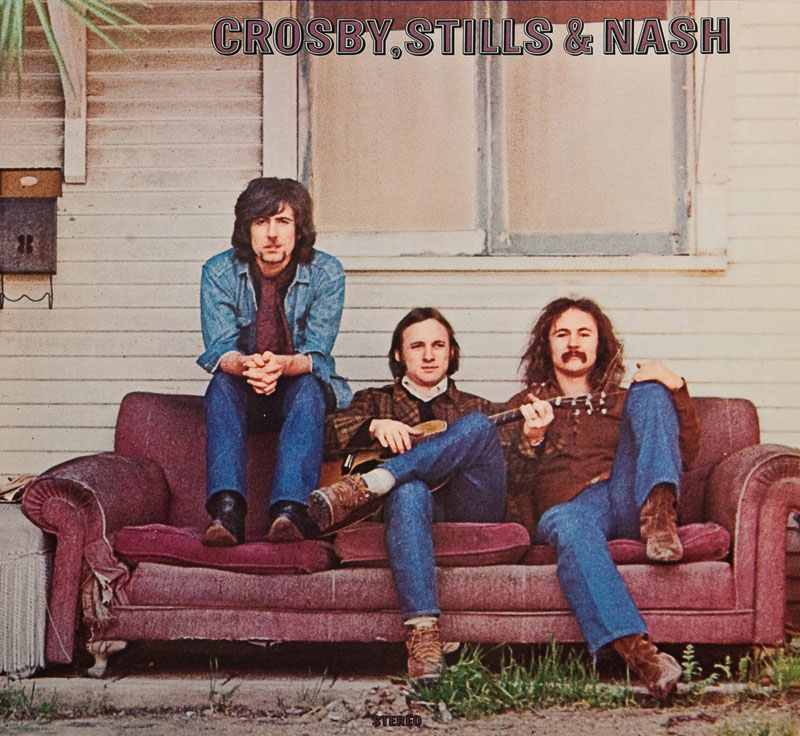
A wider view from back in 1969. 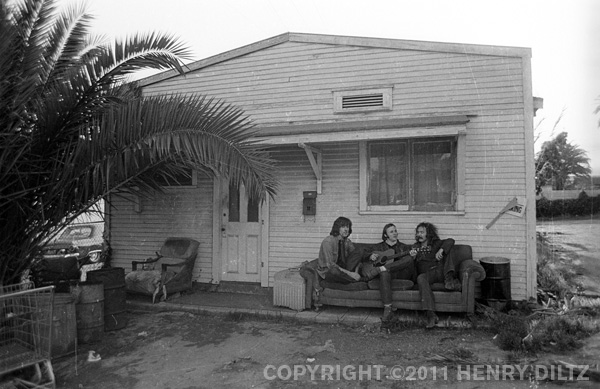
(photo: (c) Henry Diltz) The site of the album cover photo location, 815 Palm Avenue, West Hollywood, California, as seen today on Google Street Views. (The wooden building no longer exists; the site is now a parking lot.) 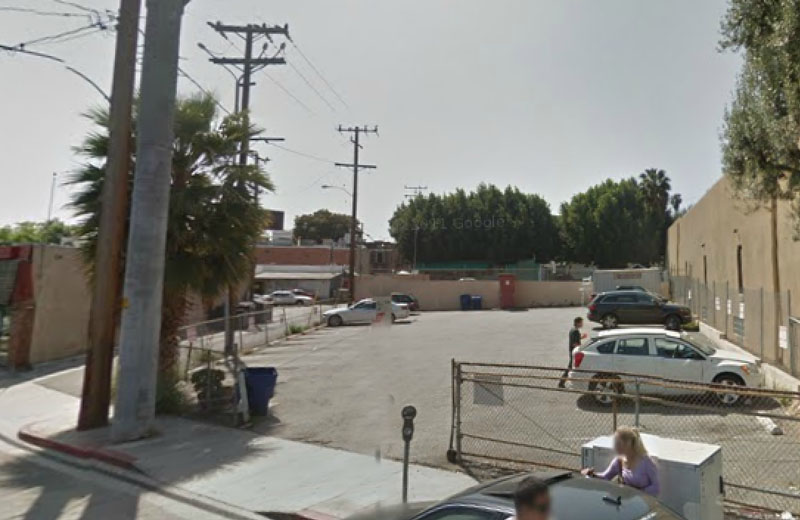
Now superimposing the album over an original photo. 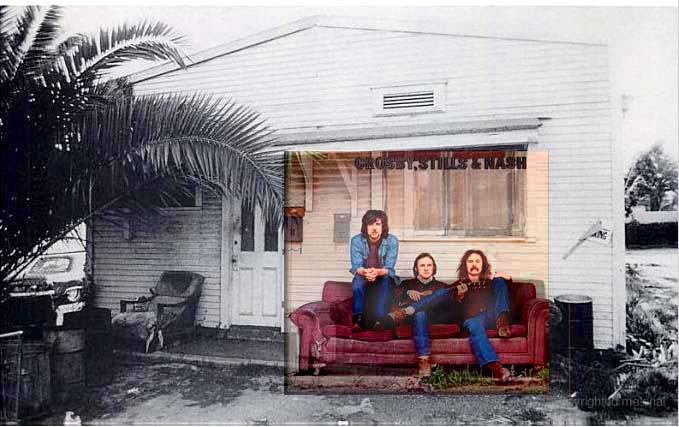
(courtesy of Atlantic; photo: (c) Henry Diltz) And now, from a little further away, with the 1969 building Photoshopped into the modern day parking lot. 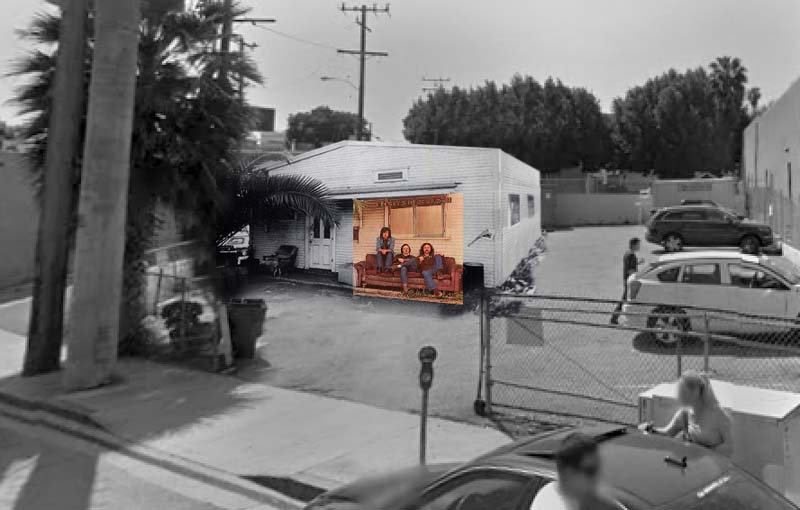
(courtesy of Atlantic; photo: (c) Henry Diltz) Here's what it might have looked like when they first discovered the little house (minus all the modern cars of course). 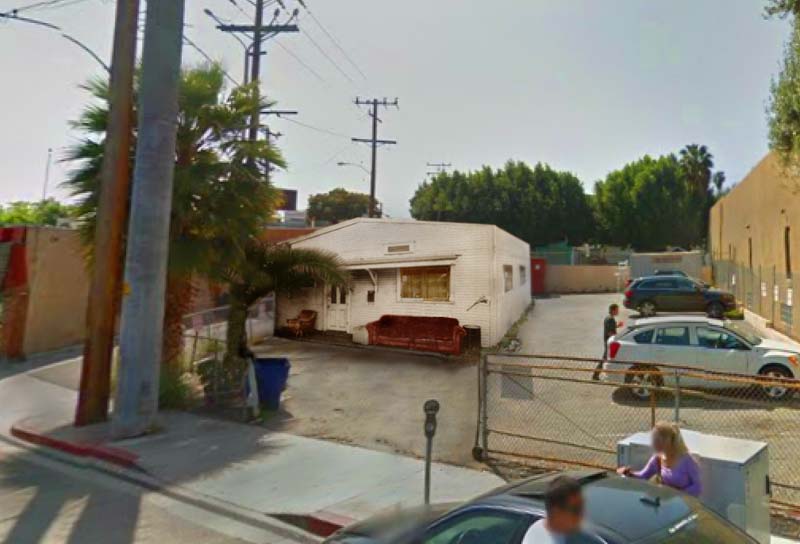
(courtesy of Atlantic; photo: (c) Henry Diltz) And in this shot, I made a pretend postcard out of the house, as if from the 1940's. 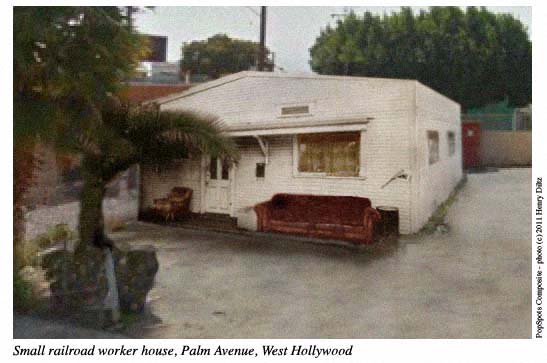
(courtesy of Atlantic; photo: (c) Henry Diltz) Photographing the location. How the album cover design came about: They settled on a little abandonded house with a couch outside. It was on a small street called Palm Avenue near a well-known Orange Julius refreshment stand (now a car wash) on the larger thoroughfare of Santa Monica Boulevard in West Hollywood. At the time of the shoot, the band did not have a name yet, so they didn't consider their seating positions, which were, from left to right: Nash, Stills, and Crosby. A few days after the shoot, they officially decided on a group name of Crosby, Stills & Nash, but when they went back to reshoot the photo in that order, to avoid record buyer's confusion -- the building had been demolished and was just a pile of timber. So the picture stayed as is, and to this day, Crosby says, "people still come up to him and say, "So pleased to speak to you...Mr. Nash." Here's another picture of the album cover. I will follow it by showing a number of outtakes from the session found on the web, all by Henry Diltz. 
(photo: (c) Henry Diltz) 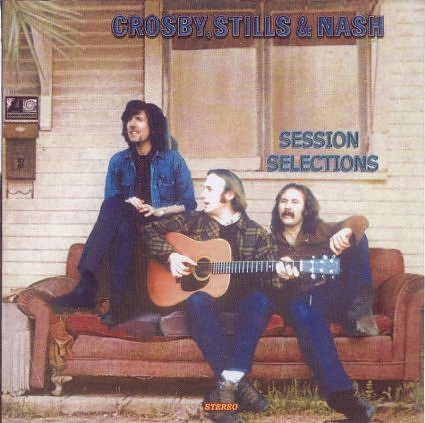
(photo: (c) Henry Diltz) 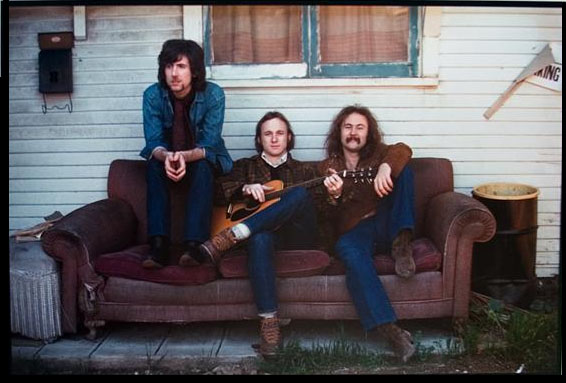
(photo: (c) Henry Diltz) 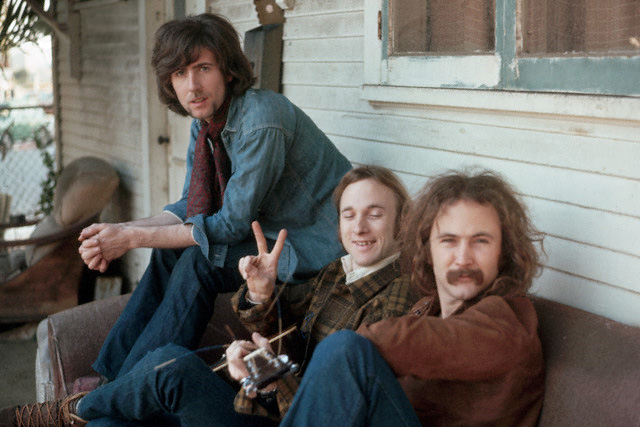
(photo: (c) Henry Diltz) 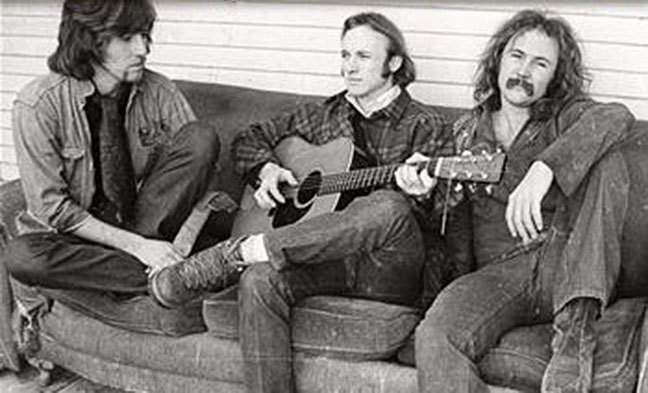
(photo: (c) Henry Diltz) 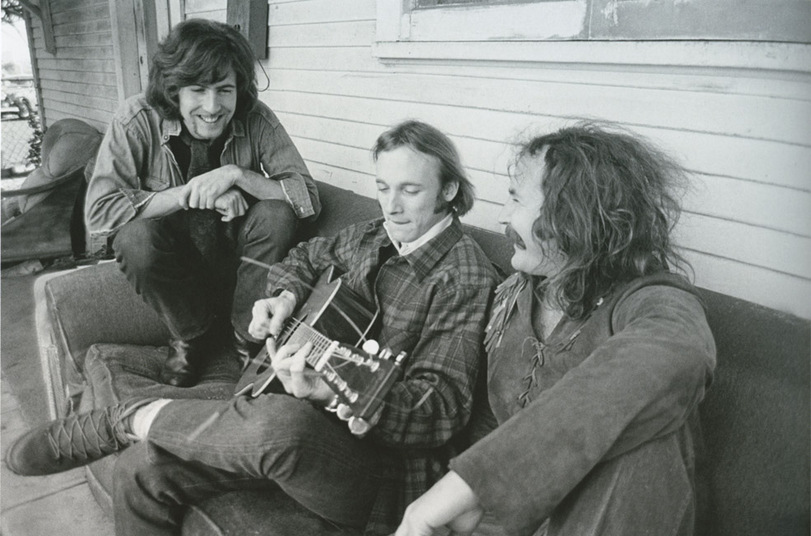
(photo: (c) Henry Diltz) 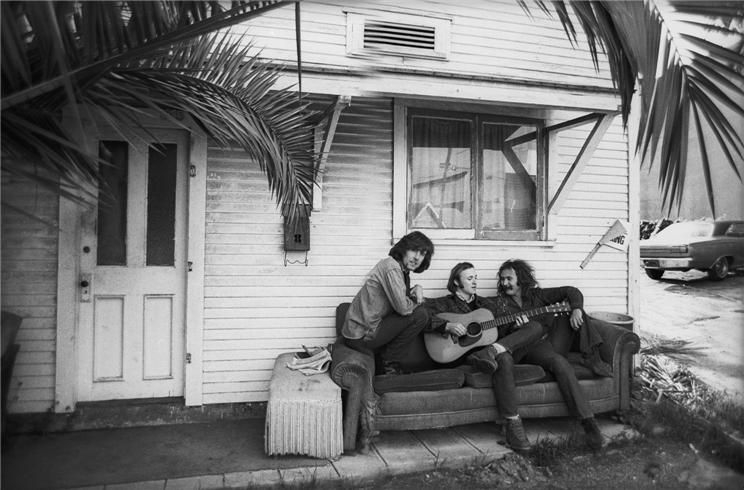
(photo: (c) Henry Diltz) In this picture you can see the face of the group's drummer, Dallas Taylor, in the front window of the house. Diltz's photo actually wrapped around the album, showing the door on the flip side. Gary Burden, the art director, added Taylor in graphically, as the drummer was not at the photoshoot. 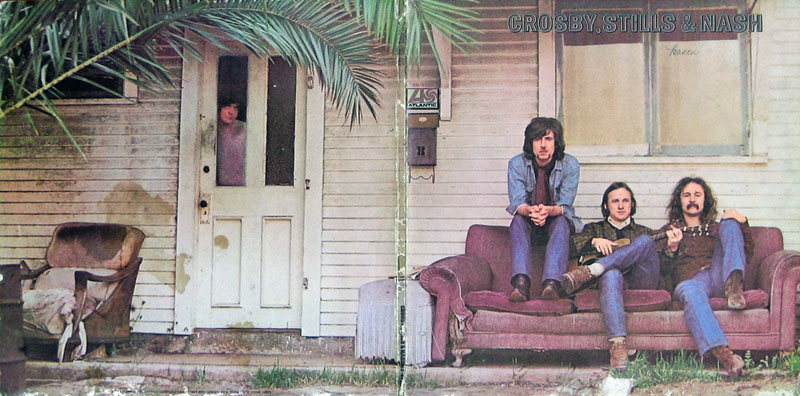
(photo: (c) Henry Diltz) Here is Dallas Taylor in a closer view. 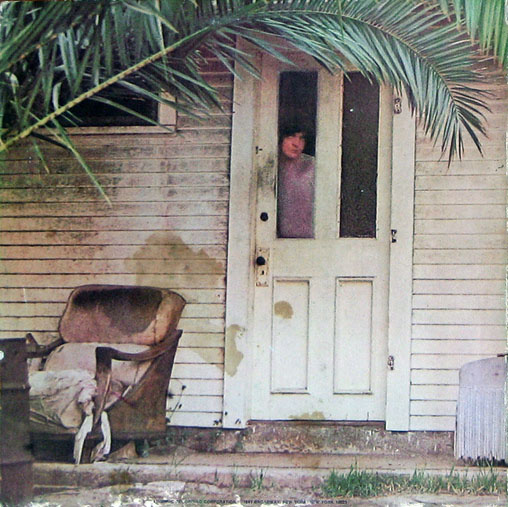
(photo: (c) Henry Diltz) Gary Burden also added the record company logo above the post box to blend it into the background. 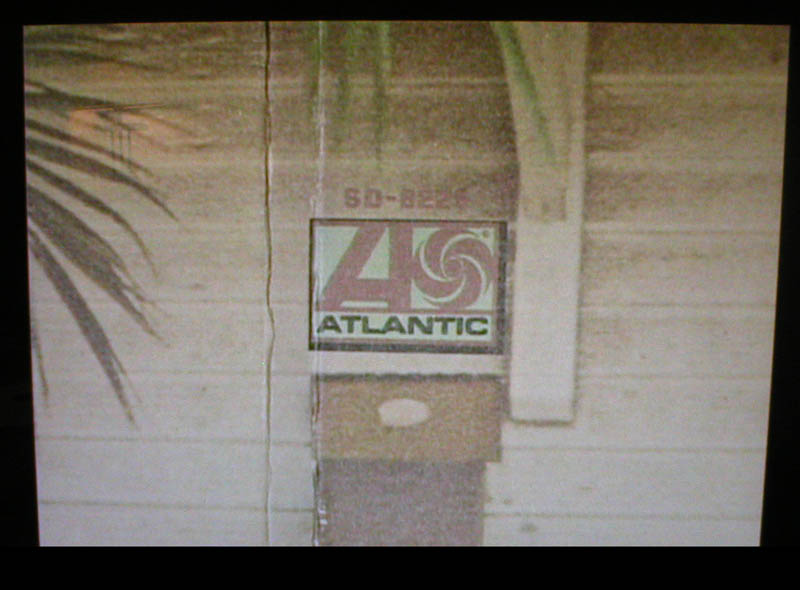
(photo: (c) Henry Diltz) He also blended the word "stereo" into the grass and stones below Still's feet. 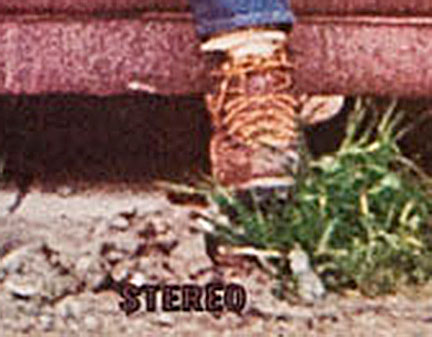
(photo: (c) Henry Diltz) This map shows where the house was located. 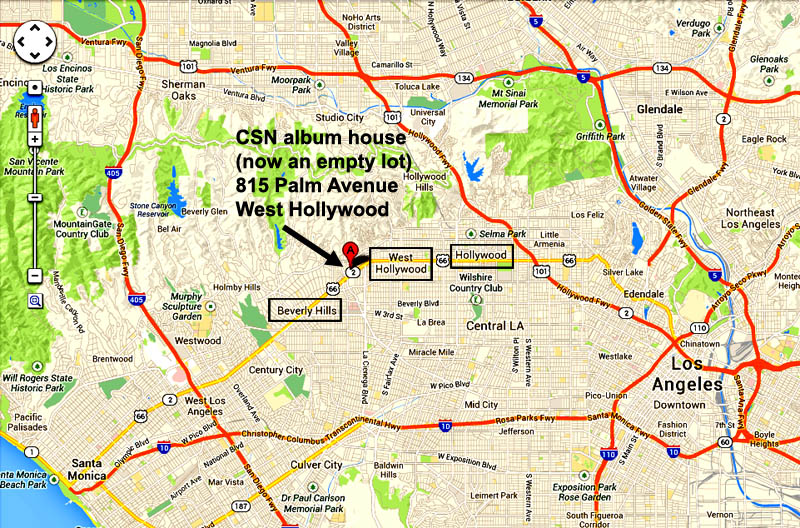
In this close up of Palm Avenue, a red outline shows where the house was. Across Palm Ave, where the car wash is, was once a very poplar Orange Julius outlet. (An Orange Julius was a drink made of orange juice mixed with milk, sugar, ice, and vanilla flavoring -- to make the orange juice less acidic tasting.) 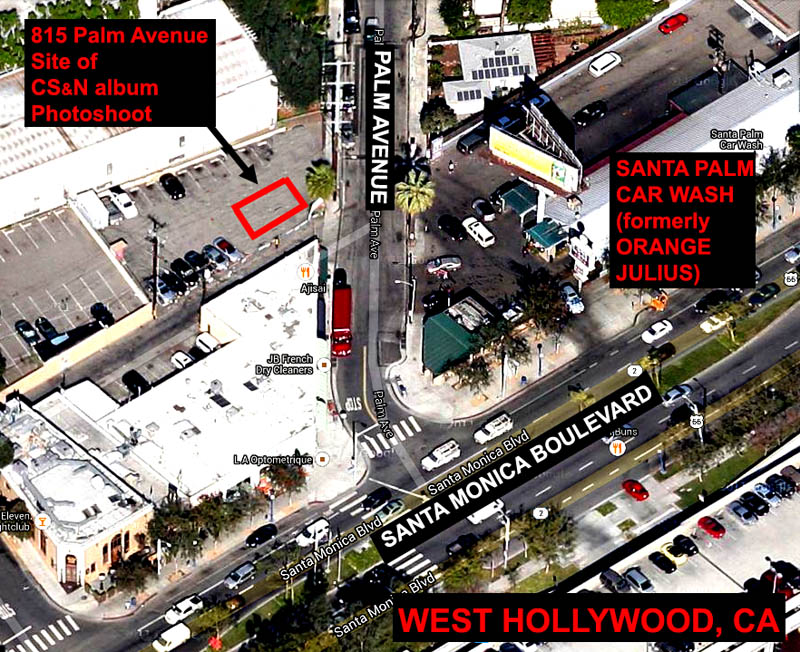
If you Google Street map the site, it might look like this... 
Then a few clicks north and you will get to this... 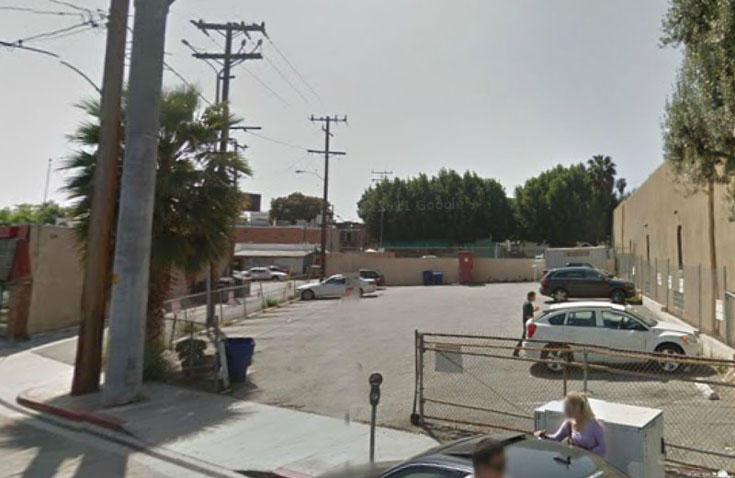
If you go to Palm Avenue, you can see similar small houses up the street. 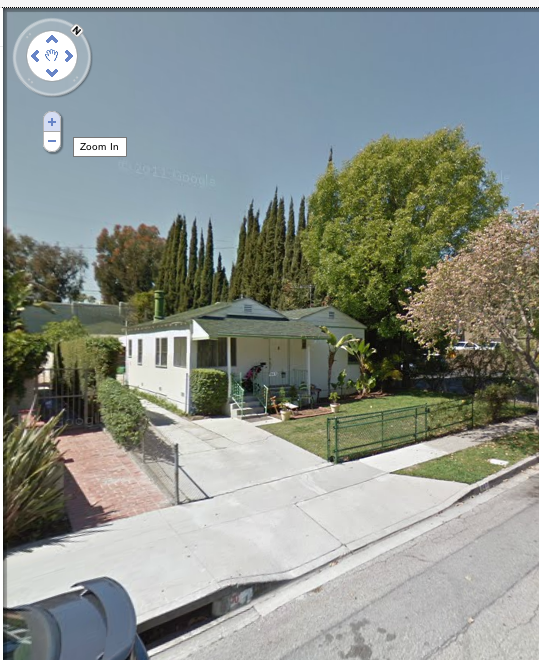
In this overhead shot from the 50's, you can just make out the roof of the house. 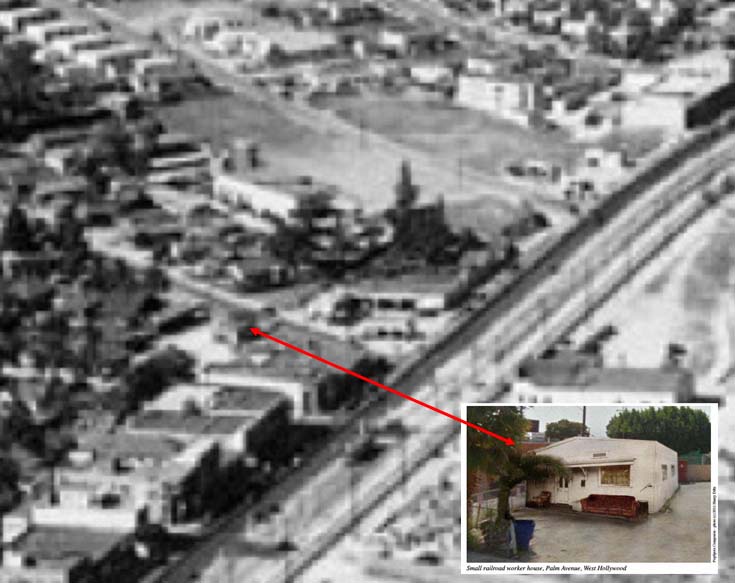
If we pull back from that photo, we see a large railroad terminus across the street. The CS&N house was part of the "employee housing" for the people who worked on the railroad (actually a trolly) that went from here to the ocean at Santa Monica. 
Los Angelenos might recognize the building that replaced the railroad terminal: The bright blue (and green on the back) Pacific Design Center. 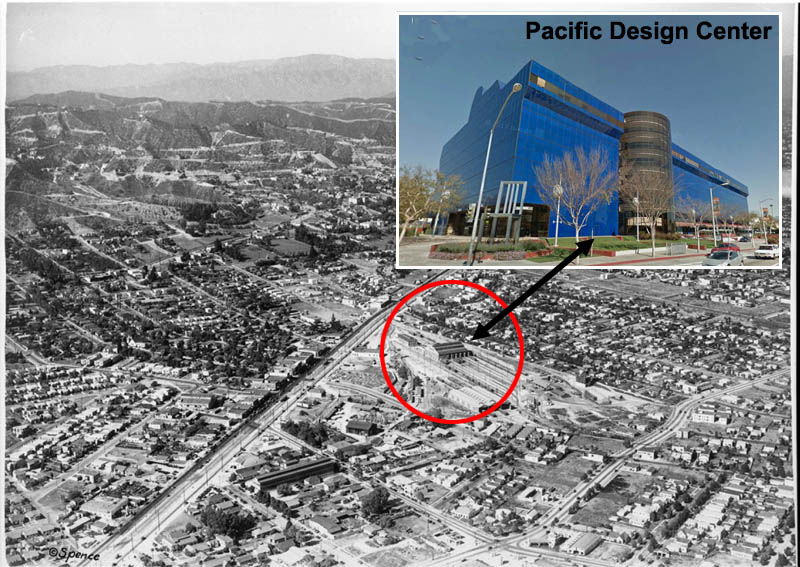
The art director (Gary Burden) and photographer (Henry Diltz) of the album created hundreds of album covers since there 60's. They also made a documentary explaining how they went about creating some of rock's most iconic covers, including, as you can see here: Jackson Brown's Saturate Before Using (which got its name by accident), Desperado by the Eagles, and Morrison Hotel by the Doors. If you love album cover history and trivia, you will love this documentary entitled: Under the Covers - A Magical Journey: Rock N Roll in L.A. in the 60's-70's, which is still available at the usual on and off-line retailers; very enjoyable. 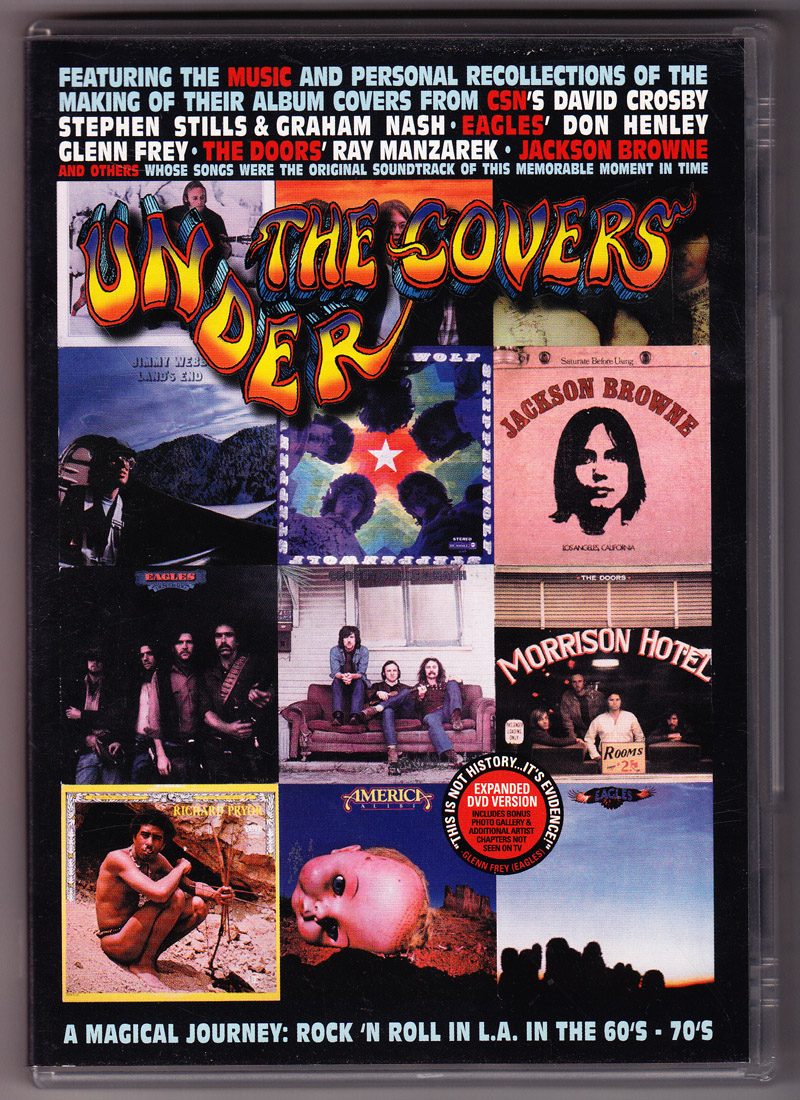
(photo: (c) Henry Diltz) Here's the back of the CD, showing other albums that are covered. 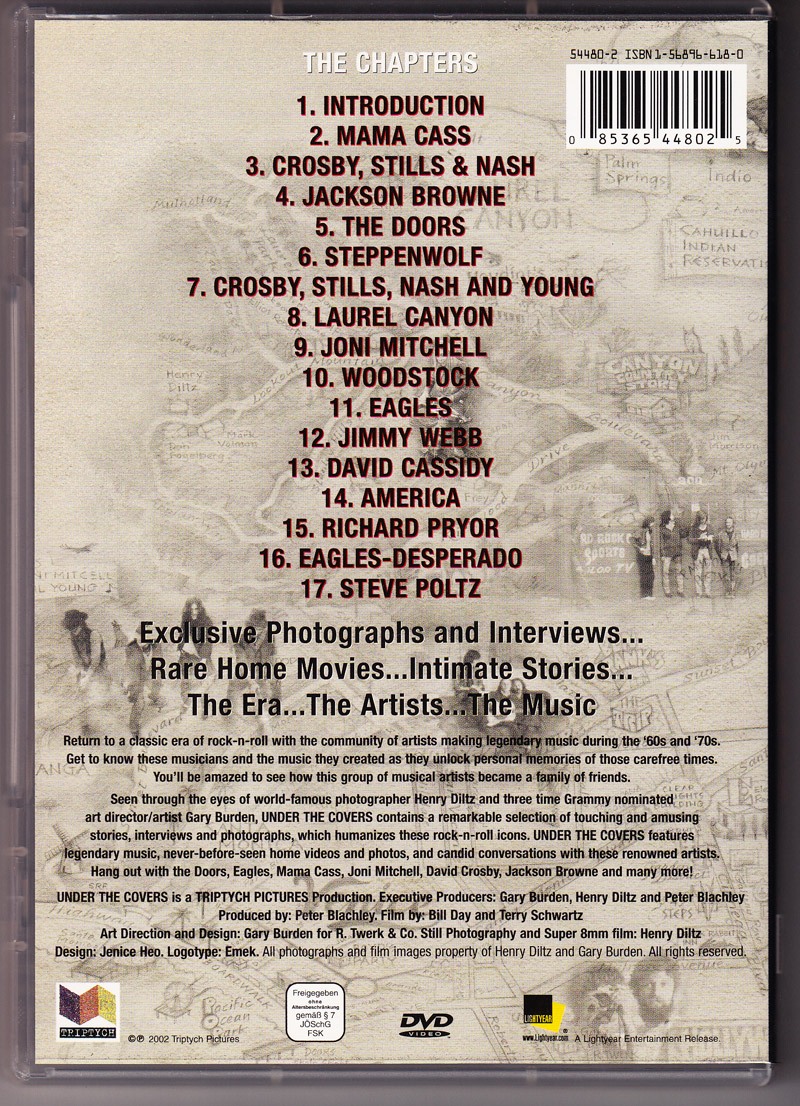
On the CD, Diltz and Burden visit Palm Avenue and show how they went about taking the photos for the CS&N cover. 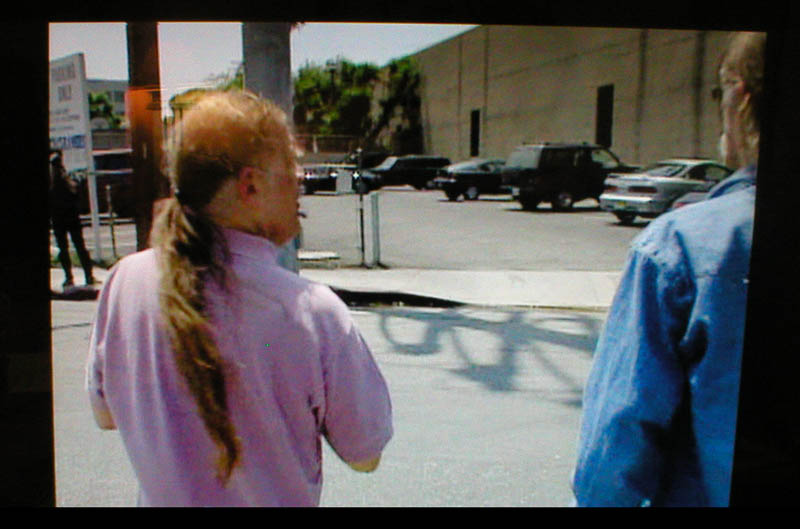
(photo: (c) Henry Diltz) ...for example, moving back across the street to get a better shot. 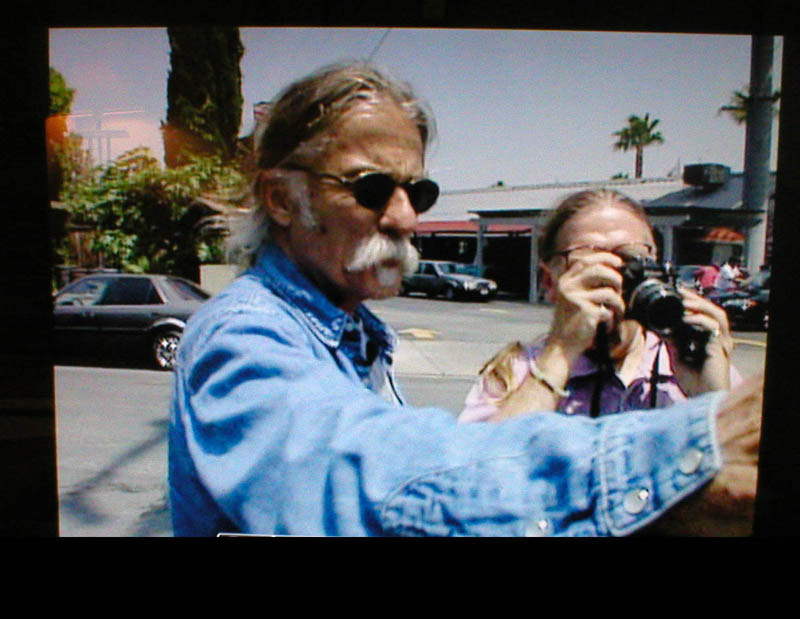
(photo: (c) Henry Diltz) That's Henry Diltz on the left, Gary Burden on the right. 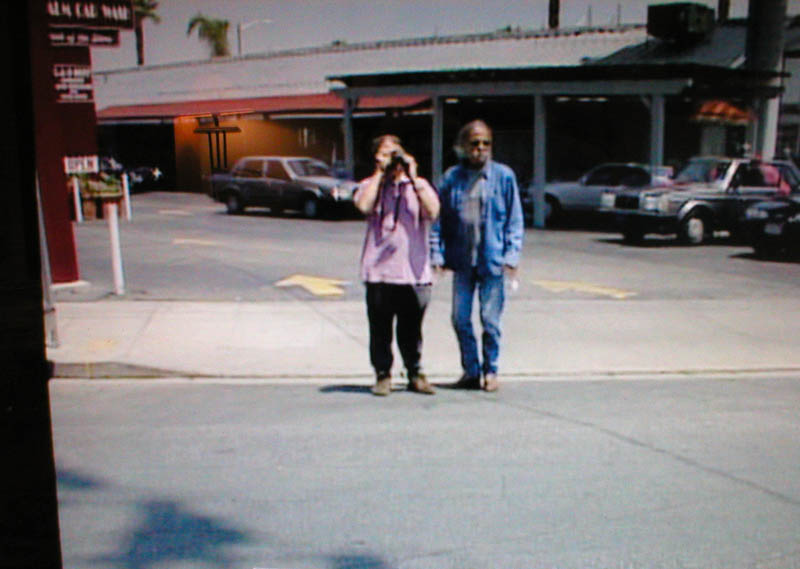
(photo: (c) Henry Diltz) The addendum to PopSpot #1, of Neil Young, describes how Diltz and Burden are offscreen giving art direction to 18-year old Joel Bernstein in this famous picture of Neil Young in Greenwich Village, New York. 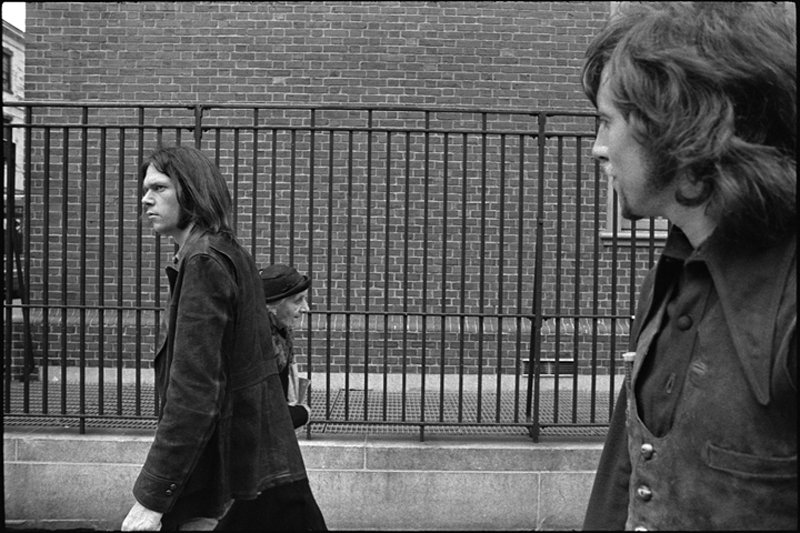
(photo: (c) Joel Bernstein) Henry Diltz also owns several Morrison Hotel galleries, including one on 124 Prince Street in Soho, New York, and one in Los Angeles. I sometimes wander in and do research flipping through their extensive collection of rock-photo books. (photo: by PopSpots) Here's Henry, with the ponytail, during a signing. (photo: by PopSpots) Henry was the official photographer of Woodstock, which I found out by reading The Road to Woodstock by Michael Lang, one of the founders of Woodstork. Here's one of Henry's photos of John Sebastian. 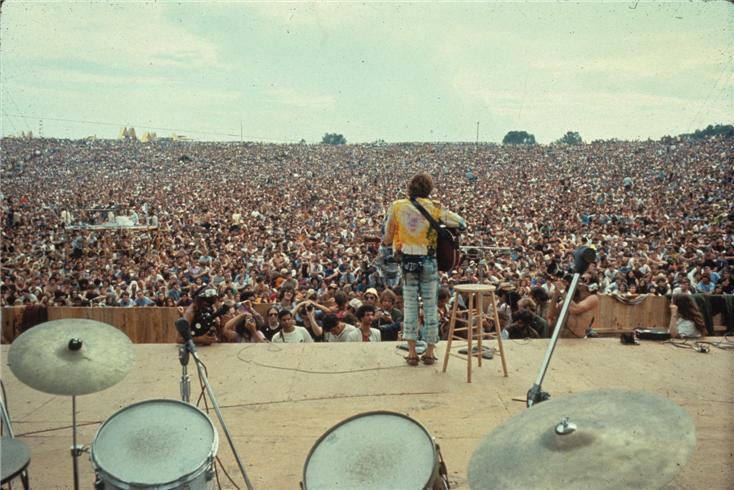
(photo: (c) Henry Diltz) For the inside gatefold of the album, Henry drove with the group (including Nash's then girlfriend, Joni Mitchell) up to Big Bear Lake, a few hours east of LA, high up in the mountains. 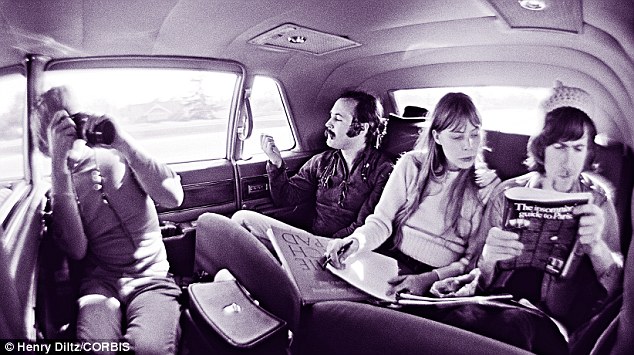
(photo: (c) Henry Diltz) This map shows Big Bear Lake's location (circled). 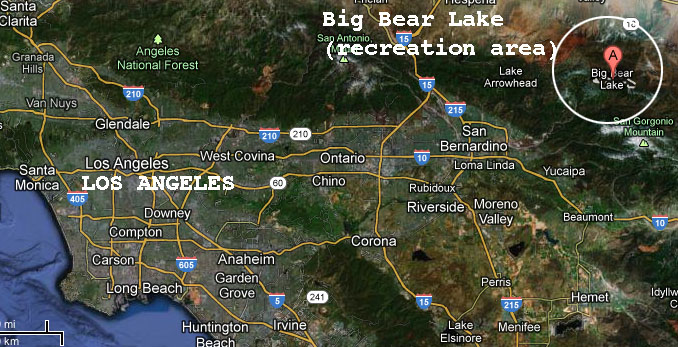
They arrived after a snow, but were prepared for it. 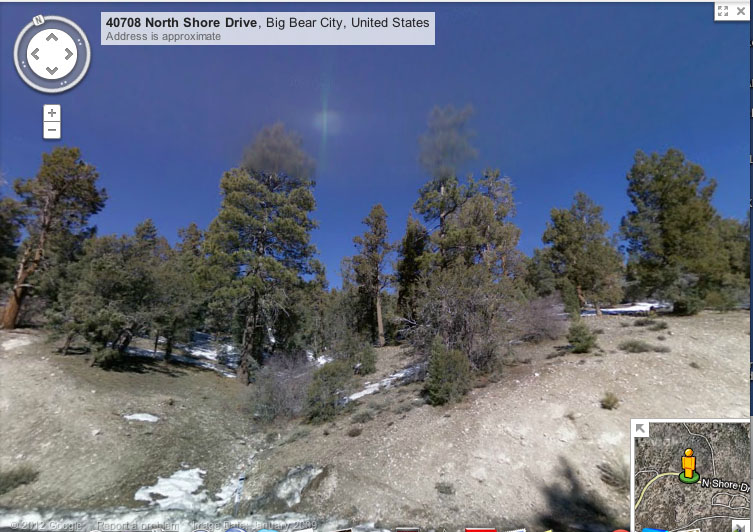
Here's an outtake. The three members of the band are all in winter coats. 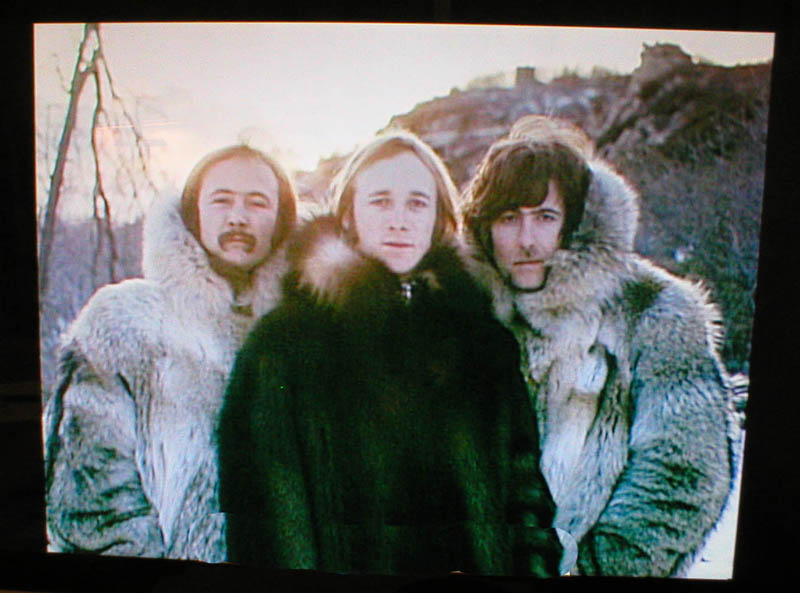
(photo: (c) Henry Diltz) ...and another outake... 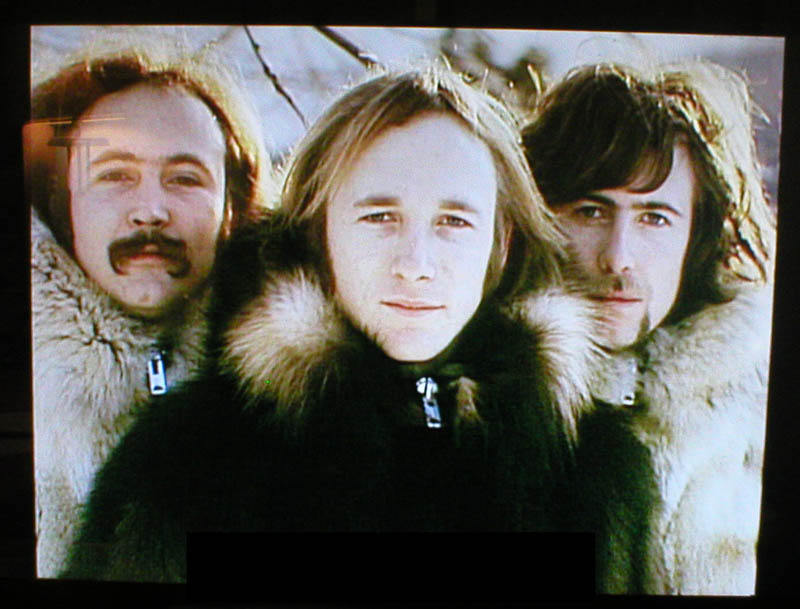
(photo: (c) Henry Diltz) ...and another. (Looks like they spotted an eagle soaring overhead.) 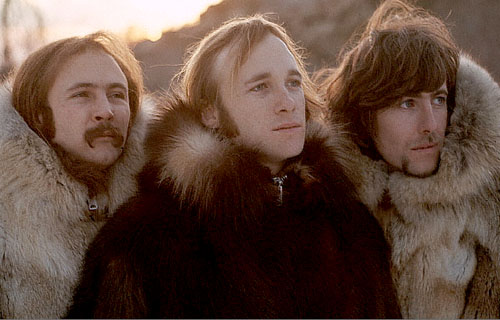
(photo: (c) Henry Diltz) Here they are practically hidden by fur. 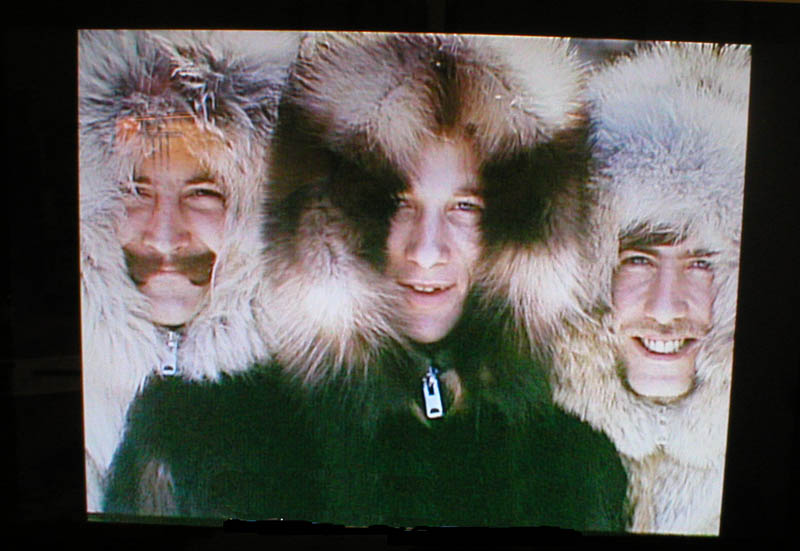
(photo: (c) Henry Diltz) ThIs is the final photo the group used for the gatefold. 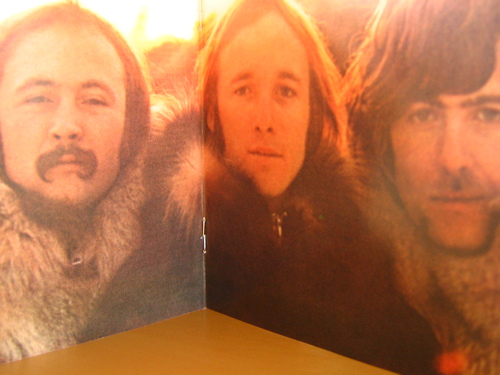
(photo: (c) Henry Diltz) And here's one just like it, and we will end on that.
(photo: (c) Henry Diltz) Here are the songs that debuted on Crosby, Still, & Nash: Side One: Thanks for visiting. Caa-aa-aa-rry on! 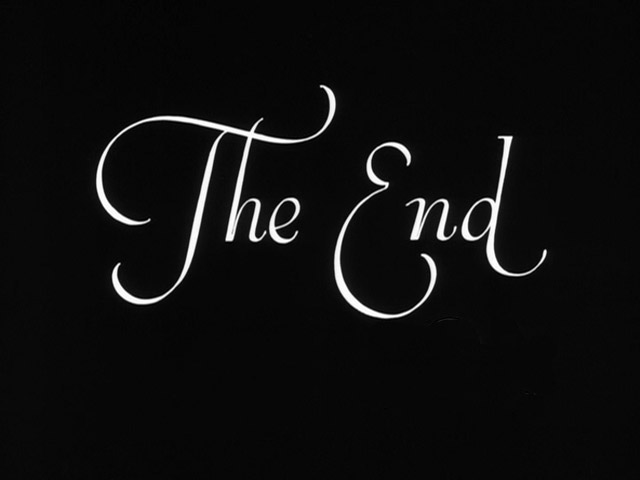
|
||

